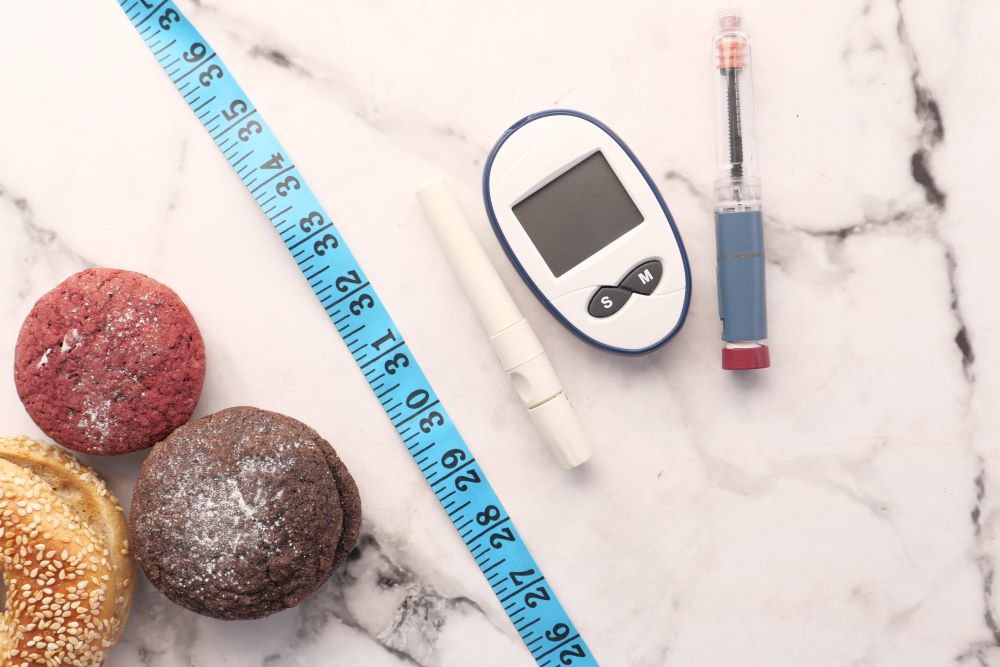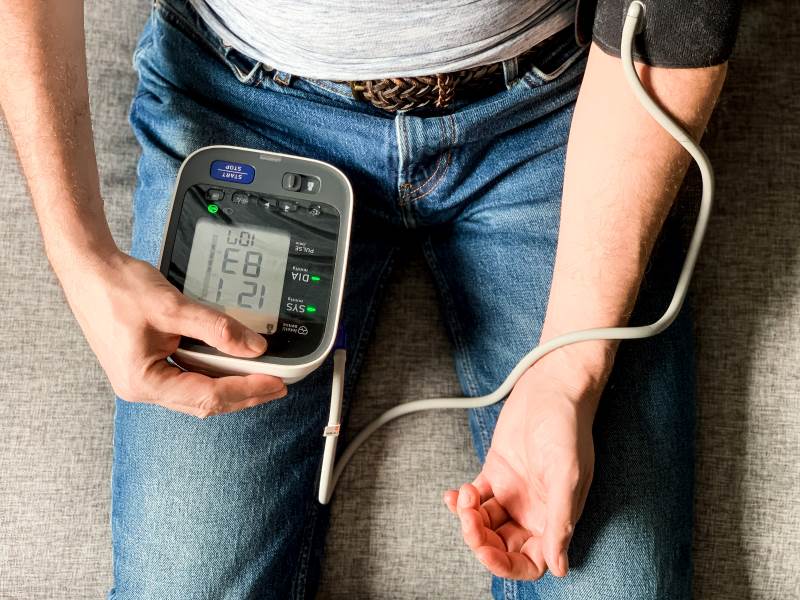10 Diseases Caused By Lack of Exercise & Sedentary Lifestyle

The work from home trend, increased work pressure, lack of time, or simply lethargy all add up into making life more sedentary. Though the impact of a sedentary lifestyle may not be felt immediately, it has a long-term effect on the body.
In this piece, we are going to explain the sedentary lifestyle effects, i.e. the diseases caused by it. Prior to this, we will focus on the meaning of lack of exercise in relation to physical wellness; read on!

Table of Contents

What is Sedentary Lifestyle?
The sedentary lifestyle includes living with little or no physical activity or exercise. It is sitting, lying, socialising, watching TV, playing video games, reading books, or working on a computer or using a mobile phone for most of the day. This lifestyle is said to be the main cause of many diseases, bad health outcomes, and avoidable causes of death.
The impacts of sedentary lifestyles and work settings are direct or indirect. One of the significant prominent direct effects of a sedentary lifestyle is obesity, an increased BMI. Physical inactivity is one of the major preventable causes of premature death all over the world.
What Are the Causes of a Sedentary Lifestyle?

These causes are often addressed by choices to increase intentional movement into daily life routines. Several factors can cause a sedentary lifestyle:
What Does Lack of Physical Activity Mean?
As per the CDC, physical activity is any bodily movement generated by the contraction of skeletal muscle that raises energy expenditure above a basal level.
Lack of exercise or physical activity refers to a routine that does not include exercise or the required amount of physical activity for optimal health and premature death.
Sedentary lifestyle risks are immense. When individuals are not involved in any physical activity or exercise, it can lead to several diseases. Read along!
10 Common Diseases Caused by Lack of Physical Activity
The lack of physical activity causes various diseases that cause many lifestyle issues. Following is a list of diseases that occur due to lack of physical activity:
1. Obesity

Lack of physical activity coupled with a poor diet, nutrition, and increased tobacco use heightens the risk of obesity.
As per data published by WHO, around 2.8 million people die each year due to overweight causes. The lack of physical activity can attack people across the age spectrum, and it opens up ways for a wide range of severe illnesses.
2. Type 2 Diabetes

Lesser involvement in physical activity or exercise makes a body resistant to insulin, thus increasing the blood sugar level—all these results in type 2 diabetes.
The numbers of diabetic patients in India were around 72.9 million adults (as per The International Diabetes Federation) in 2017. The lack of exercise if resulted in type 2 diabetes can be fatal unless kept under check.
3. High Cholesterol, High Blood Pressure & Heart Disease

When individuals are not involved in exercise or physical activity, they experience a rise in LDL (Low Density Lipoprotein) or bad cholesterol levels. This affects the heart massively. Heart takes a heavy toll on supplying oxygen to cells, tissue, and organs.
If individuals have high cholesterol, it will deposit on the walls of arteries which leads to a medical condition called atherosclerosis. As a result, arteries become narrow and narrowed blood vessels cannot supply the required blood flow to the heart. Thus, slowly the muscle begins to die, increasing the risk of a heart attack.
The list of diseases caused by lack of exercise also includes high blood pressure as blood vessels suffer from excessive force (due to narrowed vessels), which in turn results in high blood pressure. If individuals have a blood pressure level stating a reading of 149/90, it means they have high blood pressure.
Note: High blood pressure also restricts the limit of blood supply to the heart.
4. Osteoporosis

Osteoporosis refers to a medical condition where bone becomes weak and brittle to such an extent that even mild stresses such as bending over, coughing or falling leads to fracture. Osteoporosis affects bone health and bone loss. Exercises boost bone development and lack of it, increasing the risk of calcium loss from bone hence osteoporosis.
Osteoporosis results when too much bone mass is lost and the structure of bone tissue alterations. Certain risk factors can cause osteoporosis or raise the chance of developing the condition. As the illness worsens, an individual's bones gradually become weaker, leading to fractures.
5. Cancer

Cancer can begin practically anywhere, with trillions of cells making up the human body. Human cells typically divide to create new cells as needed by the body by growing and multiplying. New cells replace old ones when they die due to ageing or injury. One of the lack of exercise is that it heightens the chance of various cancers.
These include breast cancer, colorectal cancer, prostate cancer, uterus cancer, esophagus cancer, kidney, lung and stomach cancer. Engaging in regular physical activity or exercise can lower the chances of developing such diseases.
6. Stroke

Narrowed blood vessels result in reduced blood flow to the brain.
The brain requires oxygen present in the blood to function properly. When it does not get the required supply of oxygen, it stops functioning; hence, individuals experience a stroke.
Prolonged lack of blood flow can damage or kill brain cells. Thus, quick intervention is crucial to minimise damage and aid recovery.
7. Metabolic Syndrome

A collection of risk factors for diabetes, heart disease, and other illnesses is known as metabolic syndrome. Although a person may only have one risk factor, they frequently have multiple risk factors combined. If you have three or more of them, you have metabolic syndrome.
Inflammation all across the body and increased blood clotting are common in people with metabolic syndrome. It is unclear to researchers whether these disorders precipitate or exacerbate metabolic syndrome.
8. Obstructive Sleep Apnea

Obstructive sleep apnea is a blockage in the airway that prevents air from passing through the windpipe while you sleep, due to the obstruction and lack of airflow, your blood oxygen levels drop, which sets off a survival response in your brain that awakens you long enough to breathe again.
That response is essential to maintaining your breathing, but it interferes with your sleep. Numerous disruptive or potentially dangerous symptoms might result from it. It is often associated with obesity and can lead to serious cardiovascular problems.
9. Depression and Anxiety

Anxiety disorders and depression frequently coexist. Anxiety disorders cause severe, uncontrollable sensations of concern, panic, fear, and anxiety in their sufferers. These emotions may persist for a long period and cause problems with day-to-day tasks. Depression and anxiety slow down life and make a person inactive or distracted.
Regular physical activity is known to boost mood and mental health. A lack of exercise can contribute to the development or worsening of mental health conditions like depression and anxiety. Therefore, exercise is important.
10. Musculoskeletal Disorders

Injuries or pain in the human musculoskeletal system, which includes the joints, ligaments, muscles, nerves, tendons, and structures that support the neck, back, and limbs, are musculoskeletal disorders (MSDs). Multiple sclerosis (MSD) can result from abrupt exertion, repetitive strain from performing the same motions, repeated exposure to stress, or posture.
Chronic sedentary behaviour may lead to back pains, bad posture, and musculoskeletal disorders. Lower back pains, joint problems, and so on are common conditions seen more in people who never undertake any kind of physical activity.
Signs and Symptoms of Diseases Caused by Lack of Physical Activity?

Here are the common signs and symptoms you’ll notice if you have a disease caused by the lack of physical activity:
Risk Factors Associated With Diseases Caused by Lack of Physical Activity?
Adequate physical activity has been associated with many health risks. Some of the major risk factors of diseases associated with insufficient exercise are presented below:
How to Diagnose Diseases Caused by Lack of Physical Activity?

Diagnosis of diseases caused by a lack of exercise is usually made from a combination of medical history, physical examination, and diagnostic tests. Here's how to go about it:
Treatment Methods for Diseases Caused by Lack of Physical Activity?
Treating diseases associated with a sedentary lifestyle involves a multi-disciplinary approach that includes lifestyle changes, medical management, and, if necessary, physiotherapy. The following common modes of treatment are available:
What Are the Preventive Measures to Control Disease Caused by Lack of Physical Activity?
The preventive measures for diseases resulting from a lack of physical activity are adopting and maintaining a physically active way of life and other healthy lifestyle behaviours. The principal preventive measures include:
Integrating these preventive measures into everyday life can go a long way toward decreasing the risk of diseases associated with lack of activity and remarkably improving health and well-being.
What Are the Recommended Tips to Become Physically Active?
Following a few tips to maintain a physically fit lifestyle is important for a healthy life. Here is a list of suggested tips to be more physically active,
- Start exercising slowly, especially when you have been physically inactive for a long time. Include stretching, aerobic exercise, and strength training in your exercise routine.
- Set a fitness goal. Reward yourself with healthy treats and increase your workout intensity level gradually.
- List activities you like and try to do them whenever you have time, such as walking for 10 minutes during lunch break or taking the staircase instead of the elevator.
- Join fitness studios or watch online videos to learn workout posture.
- Engage yourself in gardening or taking care of the house and household activities.
- Stay motivated. Engage family members or friends as your exercise companions to get mental support.
- Take a balanced diet.
- Check calorie and food intake.
- Get enough sleep
- Use a fitness application or journal to help you trace your exercise regimen and advancement.
- Integrate different exercises to avoid monotony while exercising different categories of muscles. Try cycling, swimming, or dancing.
- Divide bigger fitness ambitions into smaller achievable benchmarks for constant drive and progress recording.
- To remain hydrated for maximum performance, take plenty of water before, during, and after working out.
- Join group activities that promote physical activities.
Does Health Insurance Cover Disease Caused by Lack of Physical Activity?
Health insurance coverage for diseases caused by a lack of exercise can vary considerably depending on the policy and the insurance provider. This normally includes health insurance plans treating and managing conditions that have resulted directly from a lack of physical activity, such as heart conditions, diabetes, and obesity.
The coverage details may include preventive measures and lifestyle counselling to help address physical inactivity. However, this usually depends on the plan's focus on preventive care and wellness programs. Patients should examine the details of their health insurance policy and discuss with their provider what kinds of treatment and prevention are covered for conditions brought on by inactivity.
Understanding the severity of the diseases linked to a sedentary lifestyle underscores the importance of adopting a more physically active routine. The above-mentioned piece thoroughly talks about the effects of a sedentary lifestyle. Read the details carefully, understand the severity of these diseases discussed, and try to follow the tips to engage diseases caused by lack of exercise into a more physically active lifestyle.














